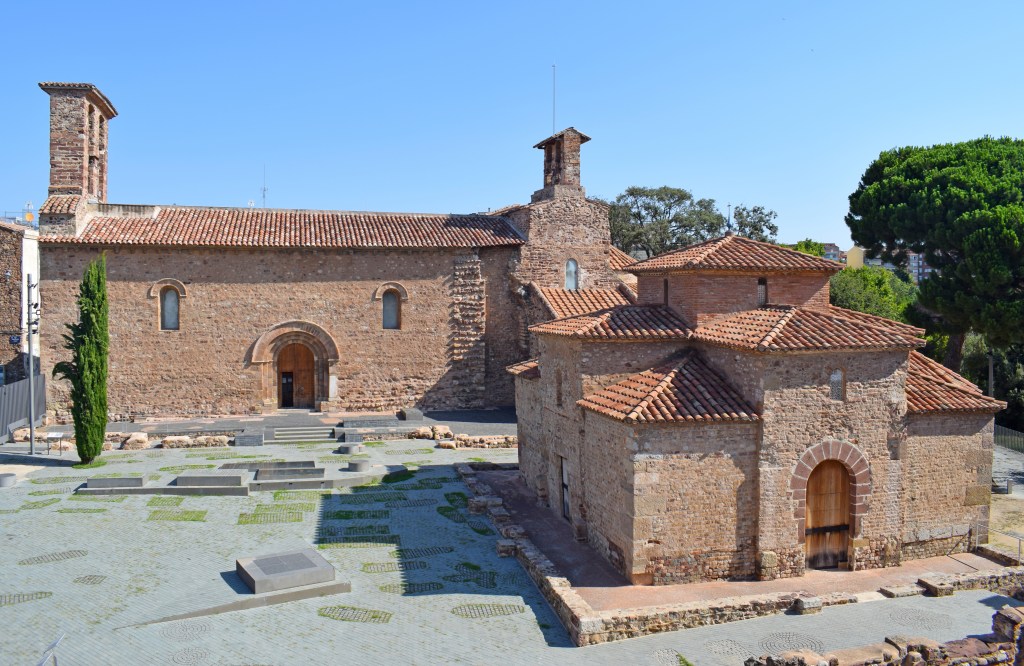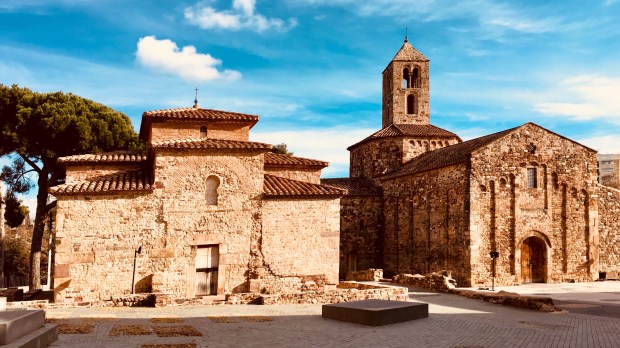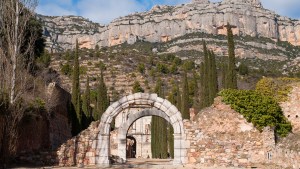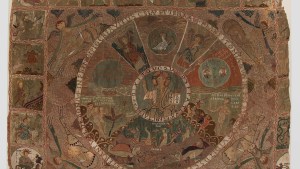Lenten Campaign 2025
This content is free of charge, as are all our articles.
Support us with a donation that is tax-deductible and enable us to continue to reach millions of readers.
The Romanesque churches of Egara in Terrassa, a few kilometers away from Barcelona, Spain, are a collection of three ancient churches that are among the most significant examples of Romanesque architecture in the Iberian Peninsula. The churches, dedicated to St. Peter, St. Michael, and Santa Maria, date back to the 11th and 12th centuries, and are located right in the historic center of Terrassa – the ancient Roman Egara.
Indeed, Terrassa originated as the Roman town of Egara (Municipium Flavium Egara), founded during the time of the emperor Vespasian (69–79 AD). Once Christianity spread throughout the Iberian Peninsula, Egara became a Visigothic bishopric, and then a Latin Catholic titular see.
The churches were built during a time of exceptional cultural and economic growth in Catalonia. At a time when most of Spain was under Muslim rule, Christianity thrived in the region, mainly due to its vicinity to Charlemagne’s Marca Hispánica, the military buffer-border zone separating the Umayyad Caliphate of Al-Andalus and the Frankish Carolingian Empire established in the 8th century.
These churches were built using a distinctive style of Romanesque architecture characterized by its use of rounded arches, barrel vaults, and decorative stone carvings – somewhat like those found in Asturias, built in “Ramir Style.” The churches of Egara are particularly notable for their richly carved portals, which feature intricate designs of biblical scenes and figures.
The church of St. Peter (Sant Pere, in Catalan) is the oldest of the three churches. It dates to the 11th century and features a classic basilical rectangular floor plan and a semicircular apse. It is a rather sober building, in typical Romanesque fashion.

The church of St. Michael (Sant Miguel) was built one century later. It features a similar basilical floor plan to that of St. Peter’s, although not rectangular: it is a perfect square. Its portal is particularly notable for its perfectly well-preserved Roman arch. It was most likely used as a funerary chapel or as a baptistery.
The church of Santa Maria (better known as Santa Maria de Terrassa) is the largest of the three churches and was also built in the 12th century, like St. Michael’s. It features a more complex basilica floor plan with three naves, a transept, and a semicircular apse. The church’s portal is also the most elaborately decorated of the three. Some of its mural paintings are considered to be among the oldest preserved mural paintings in Western Europe.
The churches of Egara are significant not only for their architectural and artistic value but also for their religious, historical, and cultural importance. They are a testament to the cultural and religious heritage of the northern Iberian Peninsula and are among the most important Romanesque churches in the Mediterranean and the Pyrenees. Since they are open to the public, constant efforts are made to preserve and restore them, including the cleaning and restoration of their decorative elements and the installation of new lighting to enhance their visual impact.



